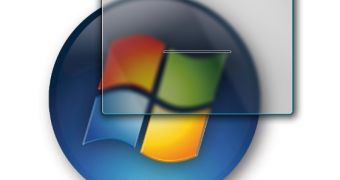The window management system is one piece of the Windows 7 graphical user interface which will evolve starting with the pre-Beta version of the operating system. According to Microsoft, the evolutionary design changes in terms of window management are expected to generate feedback and reactions as soon as the Windows 7 builds become available. With Windows 7 pre-Beta now less than a month away, the Redmond giant revealed that it took a number of different scenarios in consideration when it comes to the successor of Windows Vista.
“For Window 7 our goal is to reduce the number of clicks and precise movements needed to perform common activities. Based on data and feedback we've gotten from customers, a number of scenarios have been called out as important considerations for the design. As with all the designs we’re talking about - it is important to bring forward the common usage scenarios, make clear decisions on the most widely used usage patterns, address new and 'unarticulated needs', and to also be sure to maintain our philosophy of 'in control',” stated Dave Matthews, program manager on the core user experience team.
The software company has analyzed user behavior in multi-tasking situations but also when it comes down to focusing on a single item on the desktop. Microsoft has even looked to solutions involving virtualized desktops and docking pallets but also additional approaches which remained undisclosed. At the same time, Matthews revealed that the company labored to continue to provide support for application developers leveraging single document interfaces and multiple document interfaces.
In Windows 7, the Windows Aero border on windows will continue to be transparent even when the items are maximized, unlike in Vista. The windows management system has been tailored to support a variety of input models including touch screens. But, in the end, Microsoft has worked to improve the efficiency of managing windows, streamlining the most common actions, and adapting the system to a range of devices from laptops to PCs.
“Overall - customers feel in control, and that the system makes it faster and easier to get things done. This point is important because the feeling of responsiveness and control is a key test for whether the design matches the way people really work. We put designs and mockups in the usability lab to watch how people respond, and once we see people smiling and succeeding easily at their task we know we are on the right track. The ultimate success in a design such as this is when it feels so natural that it becomes a muscle memory. This is when people can get the feeling that they’ve mastered a familiar tool, and that the computer is behaving as it should,” Matthews added.

 14 DAY TRIAL //
14 DAY TRIAL //